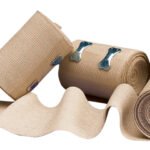Welcome to Avensia Group

Different Methods to Sterilize Medical Equipments
The health care industry is where cleanliness and hygiene are considered the most important. There are a number of diseases and harmful pathogens associated with it, and it is necessary to make sure that everything related to the health sector is kept clean.
With the world being in the firm grip of a deadly pandemic, hospitals and clinics have increased their emphasis on maintaining a hygienic environment. Medical equipment used in various medical procedures has to be properly sterilized and disinfected to make sure that there is no risk of cross-contamination between the patients.
Sterilization eliminates harmful substances like dirt, blood, and other particles from all surfaces, and protects the health of both the equipment and the people associated with it. But, a wrong sterilization method done for a piece of equipment can lead to even more harmful conditions. Thus, it is very necessary to choose the right sterilization method for different types of equipment, so as to make the process successful. Let us have a look at the different sterilization methods advised by the medical supplies in Dubai.
Steam Sterilization
Steam sterilization is one of the most common, effective, and cheap sterilization methods. The steam sterilizers called autoclaves, apply intense pressure to an object, to eliminate the microorganisms on it.
While steam sterilizing, you must ensure that the steam reaches all the surfaces of the equipment. You may wrap it with cotton or paper to avoid any kind of damage to the equipment. Inside a steam sterilizer, the objects should be placed with enough gaps in between, so that each of them can freely move.
Chemical Sterilization
This is the sterilization with the help of chemical solutions like Bleach, Ozone, Hydrogen peroxide, and Ethylene oxide.
Chemical sterilization can kill a wide range of harmful microorganisms when the equipment is submerged into the chemical solution for a certain amount of time. After sterilization, you should rinse off the object and allow it to dry. But this method is not suitable for fiber optics, biological objects, and heat-sensitive equipment.
Dry Heat Sterilization
If steam cannot sterilize the equipment or can destroy it, the next way is dry heat sterilization. This is a strong method that takes more time and high temperatures up to 340 degrees F. for the same reason, this method is not suitable for some materials, but is even more effective than many other methods.
Plasma Gas Sterilizers
In this process, vaporized Hydrogen peroxide is added to the chamber and it sterilizes the medical equipment enclosed. When you remove this vapor from the chamber, a plasma of lower temperature is produced, which completes the total sterilization.
This technique is the best for the type of equipment that is moisture-sensitive. As Oxygen and water are the by-products, it is also environmental and human-friendly.
Vaporized Hydrogen Peroxide (VHP) Sterilizers
Similar to Plasma Gas Sterilizers, Hydrogen peroxide vapors are used in VHP sterilizers, but plasma gas is not included in the sterilization process. Here, a generator regularly injects VHP into the container, till it reaches the correct concentration that facilitates sterilization, and the vapors then remove all the microorganisms in the enclosure.
After sterilization, this process is reversed by the generator, and the vapor breaks down into eco-friendly substances. Having a low cycle time helps in sterilizing more batches of equipment in comparatively lesser time.
All these sterilization methods have their own unique characteristics that define the rate of success. Moreover, each method goes best with different equipment according to the composition, process, and agents used for sterilization. Thus, make sure that you choose the right one that gives the best result for your medical equipment.






